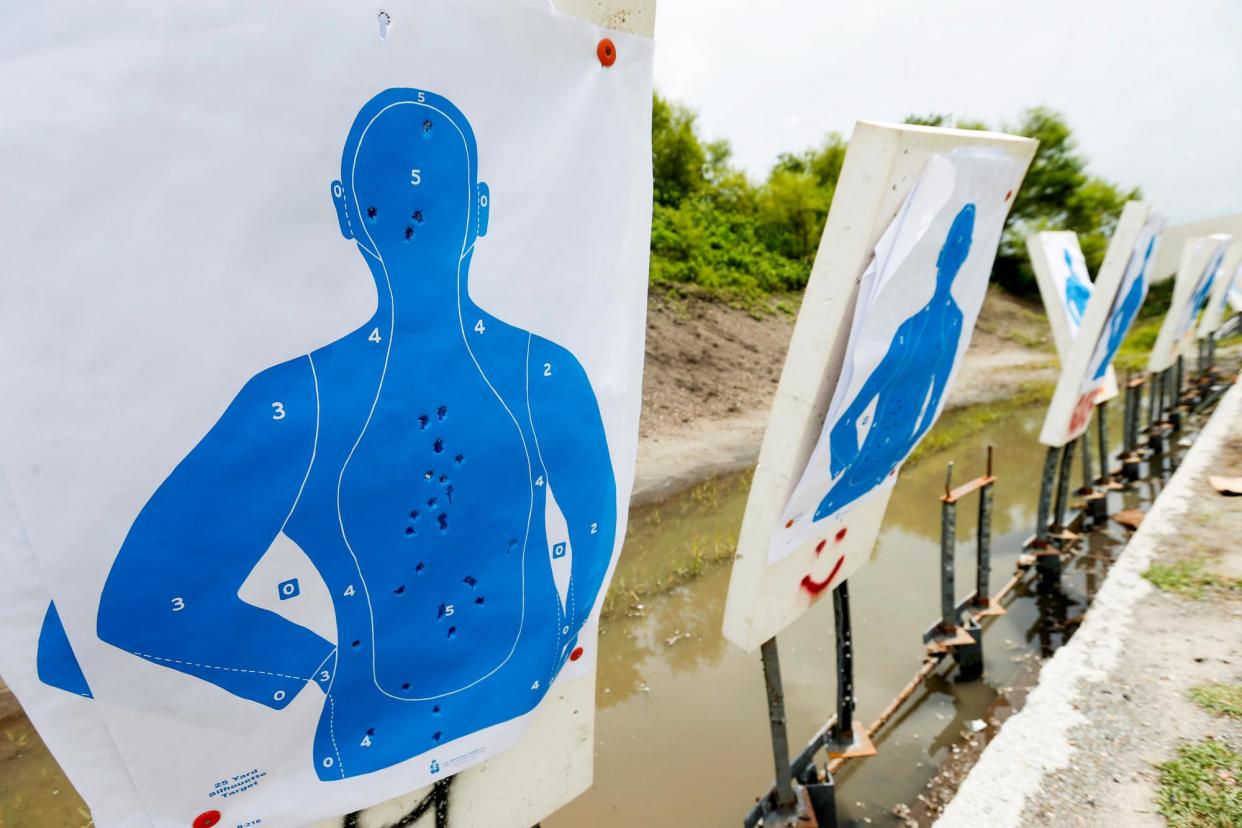Ohio to purchase mobile homes to train public school staff in firearms

Ohio appears to be the first state to purchase shoot houses – mobile homes designed for indoor firearms training – to better prepare public school staff “to respond to an active shooter”.
The Ohio controlling board, which helps oversee changes to the state budget, approved public safety officials’ request for $78,028 last month to purchase two shoot houses to help train public school employees that are allowed to carry firearms at work.
Related: Rust to riches? Ohio city’s fortunes set to rise with flying taxi startup
“Currently, we have movable canvas walls that can be configured to simulate responding to an active shooter in a school, like walking down a hallway, but there are limits,” said Jay Carey, a spokesperson for the Ohio department of public safety. “The more realistic we can make the training, the better prepared armed school staff will be to respond to an active shooter.”
Carey said the state is “looking to purchase” shoot houses because they “offer several advantages like doors and windows so armed school staff can practice opening doors and looking through windows just like they would find in a school”.
Though Ohio is still in the “early stages of procurement”, the shoot houses could be incorporated into teacher firearm training as early as this summer, Carey said.
The purchase of shoot houses is the latest in a string of wins for gun rights supporters in Ohio, who regularly and successfully seized on deadly mass shootings to loosen firearms restrictions in the state – especially inside classrooms. One of the largest expansions of Ohio gun rights came in 2022, after 19 children and two teachers were killed by a gunman at an elementary school in Uvalde, Texas. Ohio Republicans responded by lifting restrictions on school teachers, custodians and bus drivers from carrying firearms at work.
Under the 2022 law, school personnel – who were previously required to receive the same 700 hours of firearms training as law enforcement officials or security officers – can carry guns at school after 24 hours of instruction, provided they have permission from the local school board.
Part of that training could soon take place in government-purchased shoot houses.
“It’s a waste of money,” said Kara Butlien-Cohen, a high school science teacher in Ohio. “It doesn’t make a whole lot of difference where they were trained. Would you trust somebody who only has a day or two of gun training? Would you want that person to carry guns around kids?”
For Republican legislators, presidential frontrunners and gun rights activists, the call to arm and train teachers has become the go-to response following any high-profile school shooting. But most American teachers oppose proposals to bring guns into classrooms: nearly three-fourths of US teachers oppose “special training” to arm them in schools, according to a Gallup poll conducted shortly after the 2018 Parkland massacre.
Jeff Wensing, vice-president of the Ohio Education Association, the state’s largest teacher’s union, said “we don’t believe that our members should be asked to serve a dual role as both an educator and a security officer”.
The state currently has 67 school districts in which staff are allowed to be armed, according to the Ohio department of public safety. Most of those districts are in rural Ohio, where Wensing said “a small fraction” of teachers worry about what might happen if gun violence unfolds on campus – law enforcement tends to be slower to respond to calls from rural areas because of distance.
“It is a difficult decision to make, if you’re in those districts,” Wensing said.
If a rural school district decides that they need guns, Wensing said “you need to have those individuals highly trained”, a difficult goal to achieve within the state-mandated 24 hours of initial firearm training.
Kontek Industries, the North Carolina-based defense company that manufactures the shoot houses that Ohio is preparing to purchase, claims that their models offer “realistic training” to “prepare your tactical team for their mission”.
“Oh sure, let’s take teacher Sally and teacher Joe, with the handguns that they’ve purchased, and put them in a video game simulation,” said Lora Green, who helps lead the Ohio chapter of Moms Demand Action, an advocacy group that works to end gun violence.
Green, who lives in rural Ohio, remained skeptical about rural school districts’ need for firearms.
She pointed to a 2019 study by Everytown for Gun Safety, which found that armed school personnel – even those that receive substantially more firearms training than Ohio law requires – increase the risk of gun violence on campus.
“Putting guns into these classrooms does not help,” Green said. “Why don’t we put money into things that actually make our schools and kids and teachers safer, instead of paying tens of thousands of dollars so that a couple teachers can cosplay being in Fallujah.”


